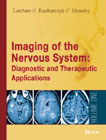VOLUME I
PART I. Principles of Neurological Imaging
Section I. Principles of Image Formation
1. Imaging Principles and Techniques
2. Impact of CT Advances on Clinical Neuroimaging
Section II. Techniques of Functional Imaging
3. Overview
4. Functional Imaging with Positron Emission Tomography (PET) and Single Photon
Emission Computed Tomography (SPECT)
5. Mapping Brain Function with MRI
6. Magnetoencephalography and Magnetic Source Imaging
Section III: Magnetic Resonance Spectroscopy
7. MR Spectroscopy in Intracranial Disease
Part II: Cerebrovascular Disease
Section I: Pathophysiology and Clinical Presentations of Ischemic Stroke
8. The Pathophysiology of Cerebral Ischemia
9. Cerebral Ischemia: Etiology, Epidemiology, and Clinical Presentation
10. A Functional Atlas of Brain Vascular Territories
Section II. Imaging the Cerebral Parenchyma in Ischemic Stroke
11. Computed Tomography
12. Magnetic Resonance Imaging
13. Diffusion-Weighted MRI
14. Clinical Sodium MR Imaging of the Brain
Section III. Imaging Cerebral Perfusion
15. Xenon-Enhanced CT: Technique and Clinical Application
16. CT Perfusion
17. SPECT
18. Perfusion MR and the Perfusion/Diffusion Mismatch in Stroke
19. Arterial Spin Label Perfusion MRI
Section IV. Imaging the Cerebral Vasculature in Ischemic Stroke
20. Conventional Cerebral Angiography
21. Computed Tomographic Angiography
22. Physical Principles of Neuro MR Angiography
23. High Resolution MR of Carotid Atherosclerosis
24. Ultrasonic Evaluation of Extracranial Carotid Arteries
25. Transcranial Doppler Sonography
Section V. Therapy of Ischemic Cerebrovascular Disease
26. Cerebral Neuroprotection
27. Thrombolytic Therapy in Acute Ischemic Stroke
28. Intra-arterial Therapy: Thrombolysis and Mechanical Thrombectomy
29. The Use of Imaging to Triage Intervention in Acute Ischemic Stroke
30. Angioplasty and Stents
Section VI. Pathophysiology and Clinical Presentations of Hemorrhagic Stroke
31. The Pathophysiology of Hemorrhagic Lesions
32. Spontaneous Intracerebral and Subarachnoid Hemorrhage: Epidemiology,
Etiology, and Clinical Presentation
Section VII. Imaging Intracranial Hemorrhage and Its Etiologies
33. Imaging of Intracranial Blood
34. Hemorrhagic Stroke Due to Hypertension and Arteritides
35. Imaging of Cerebral Aneurysms
36. Endovascular Therapy of Aneurysms
37. Imaging and Endovascular Therapy of Intracranial Arteriovenous Fistulae
38. Endovascular Therapy of Arteriovenous Malformations and Fistulae
Section VIII. Venous Occlusive Disease
39. Imaging and Endovascular Therapy of Cerebral Venous and Dural Sinus
Thrombosis
VOLUME II
Part III: Cerebral Nonvascular Disease
Section I. Neoplastic Disease
40. Primary Intra-axial Tumors
41. Primary Extra-axial Tumors
42. Metastatic Brain Tumors
Section II: Head Trauma
43. Imaging of Head Trauma
Section III: Infectious, Inflammatory, and Demyelinating Diseases
44. Imaging of Intracranial Infections in the Immunocompetent Host
45. Imaging of Intracranial Infections in the Immunocompromised Host
46. Imaging of Demyelinating Diseases
Section IV. Orbital Diseases
47. Orbital Inflammation and Trauma
48. Orbital Masses and Differential Diagnosis
Section V. Neuroendocrine Disease
49. Imaging the Pituitary Gland and Hypothalamus
Section VI. Hydrology
50. Hydrocephalus and Intracranial CSF Flow
51: MR Techniques in the Evaluation of Cerebrospinal Fluid Flow and Spinal Cord
Motion in Neurological Disorders
Section VII. Degenerative, Metabolic, and Neurobehavioral Diseases
52. Neurodegenerative Disorders of the Brain
53. Imaging the


